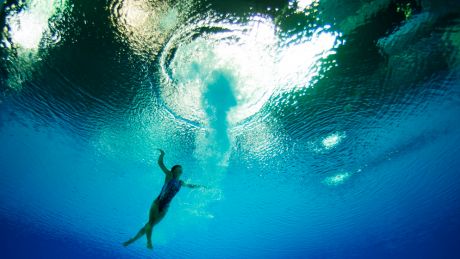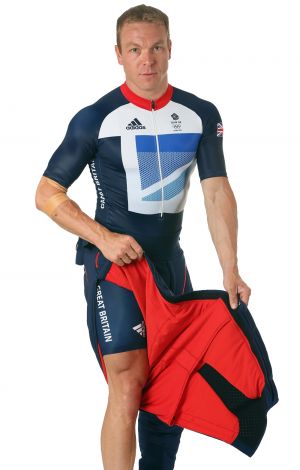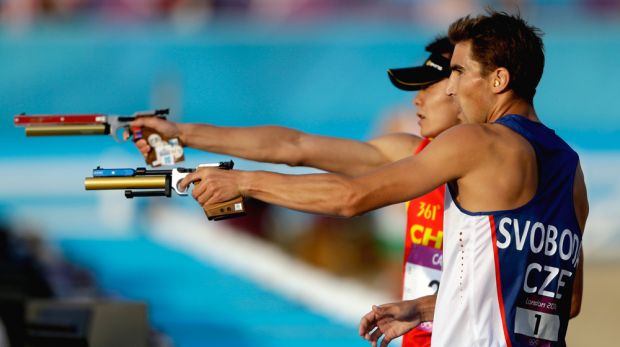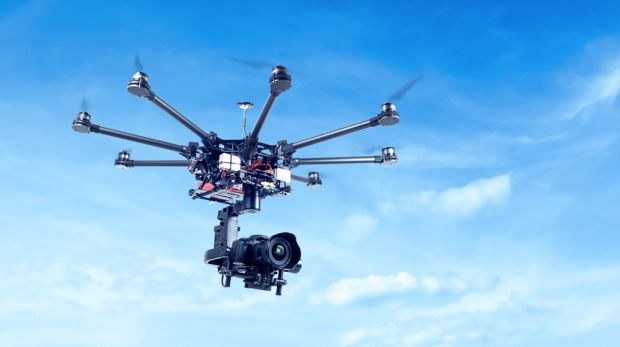Incredible Olympic Tech
The Games require more than superhuman athletes. Behind every successful Olympian there’s probably some incredible piece of kit


Battery-Powered Pants
Small margins make for big gains in sport, so the British cycling team sported the world’s first battery-powered “hot pants” in 2012. Before competing, riders warmed up on a training bike but rather than getting off and allowing muscles to cool while they waited for the race to start, Jason Kenny et al pulled on heated pants – developed by Adidas in collaboration with Loughborough University to keep muscles at the optimum temperature. Chris Hoy said of their use: “You feel like you did at the end of a warm-up, but not out of breath or fatigued. It gets you in the optimum state for training and competition.”
RECOMMENDED: The Adidas Tech Behind the New Team GB Kit
Speedy Track Surfaces
Usain and co fly round a “Mondotrack” these days. A thinner layer made of rubber granules sits on top of a shock-absorption skin. The upper layer reduces the bite depth of runner’s spikes, which can slow them down, while the shock-absorbing underlayer provides support and bounce.
Water-Surface Agitators
Water-surface agitators break up the reflection of the ceiling or sky to help divers’ perception of where the water surface is. The bottom of the pool is usually dark-coloured too, because divers can lose their bearings when they rotate: nobody wants an Olympic belly flop.
Laser Pistols

They made their Olympic debut in 2012 as part of the modern pentathlon. Lack of pellets means spectators can get closer to the action, and the pistols “shoot” laser beams with a discharge of compressed air for a satisfying bang.
Precision Starting Pistols
The pistol sends an electrical current to the starting blocks and its sound is amplified through speakers so every athlete hears it at exactly the same time. At the finish line, a laser sends a signal back to record the time to the nearest one thousandth of a second.
The Bubble Line
There are two ways of knowing when you cross the finish line as a rower or canoe sprinter: a beep and a bubble line. The crowd usually drowns out the beep, so winners need to “feel” the line under their boat. Holes are drilled into a hose at 20-30cm intervals, a compressor forces air into the hose and hey presto!
Get the Coach Newsletter
Sign up for workout ideas, training advice, reviews of the latest gear and more.
Taekwondo Sensors
The taekwondo scoring system used to rely on what the refs spotted, but now athletes wear magnetised socks and have impact sensors in vests, and for Rio, in head protectors too. That’s important because head-blows are worth three times more than torso and often decide contests.
Clever Caps
Samsung has created a swim cap to help blind swimmers know when to turn at the end of the pool. Currently their coach taps them with a pole to tell them to turn, but the Blind Cap is fitted with a vibrating sensor to alert the swimmer. It’s activated by an app or smartwatch and it’s hoped the IOC will approve its use for the Paralympic Games next month.
Pigeon Vision

Sailing has traditionally been a tricky spectator sport, because you can’t get much sense of the out-at-sea action from the shore. Now “Pigeon Vision” uses specialist drones to picture and track races – soaring across the waves so you don’t have to.
Archery Stabilisers
Look out for the two long rods extending horizontally from the grip during archery. They’re weights that dampen vibrations for just long enough – about 15 milliseconds – for the arrow to escape the bow. Archers fine-tune the weight to suit their style.
Hawk-Eye
On-court cameras track the trajectory of the ball during tennis matches, then use modelling techniques to predict where it landed – in or out. Players can use it three times to challenge umpire decisions – and Hawk-Eye always wins. No more controversial line calls and racquet-slinging required.
Super Pools
Contact pads at the end of the pools contain accelerometers – once a swimmer hits it with a pressure of 6.6lb their time is taken. Touch pads also detect when a swimmer dives into the pool and lights mounted on the starting blocks indicate the first three swimmers to tap touch pads at the end of a race.
Transponder-Loaded Water Gates
Open water gates at the beginning, end and at locations along the course in the swimming marathon use transponders that react to transmitters worn on each athlete’s wrist. The finish line also hosts high-def cameras for when the race is tight.
Laura Potter is an experienced writer and editor who contributed to Coach magazine in 2016. Laura specialises in health, nutrition, fitness and wellbeing, and has written for a wide range of publications including The Guardian's Saturday magazine, Women's Health UK, Men's Health UK, Stylist, Men's Fitness UK, Healthy magazine, Cosmo Body and Netdoctor.









